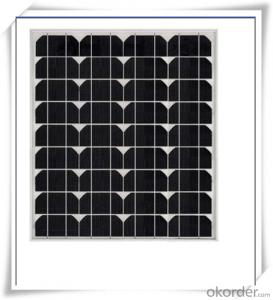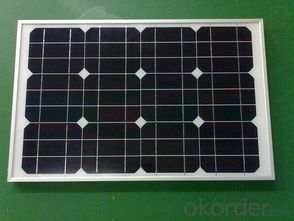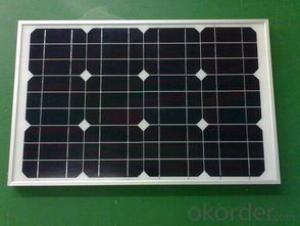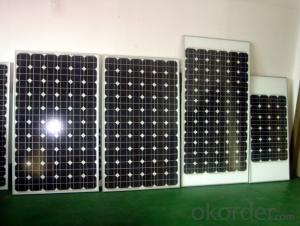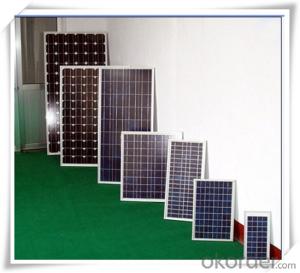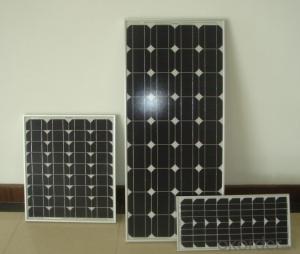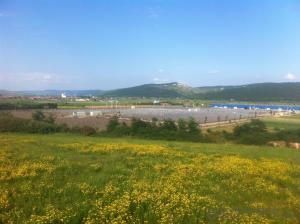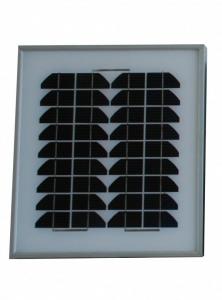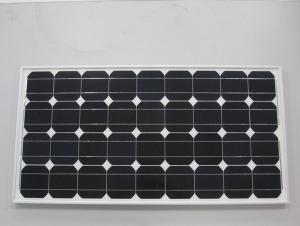Solar Panels Ny - 1.5w to 180w Monocrystalline Solar Panel CNBM
- Loading Port:
- Qingdao
- Payment Terms:
- TT OR LC
- Min Order Qty:
- 10 set
- Supply Capability:
- 300000 set/month
OKorder Service Pledge
OKorder Financial Service
You Might Also Like
1.5W to 180W Monocrystalline Solar Panel
Quick Details
Place of Origin: | China (Mainland) | Brand Name: | CNBM | Model Number: | XRP-156M-250W |
Material: | Monocrystalline Silicon | Size: | 1620x992x40mm | Number of Cells: | 60 |
Max. Power: | 250w | Optimum Operating Voltage (Vmp): | 28.8V | Optimum Operating Current (Imp): | 8.68A |
Open Circuit Voltage (Voc): | 36V | Short Circuit Current (Isc): | 8.87A | Maximum Power at STC (Pmax): | 250W |
Operating Module Temperature: | -40 °C to +85 °C | Maximum System Voltage: | 1000 V DC (IEC) / 600V DC (UL) | Maximum Series Fuse Rating: | 15A |
Packaging & Delivery
Delivery Detail: | two weeks after order confirmation |
Features:
1) High Module conversion efficiency, through superior manufacturing technology
2) 0 to +5W positive tolerance for mainstream products
3) Certified to withstand high wind loads and snow loads
4) Anodized aluminum is for improving corrosion resistance
5) Anti-reflective, Highly transparent, low iron tempered glass
6) Excellent performance under low light environment
Benefit:
25-year performance warrant
10-year Product warranty
Electrical Characteristics:
Item No. | XRM-250W |
Optimum Operating Voltage (Vmp) | 28.8V |
Optimum Operating Current (Imp) | 8.68A |
Open Circuit Voltage (Voc) | 36V |
Short Circuit Current (Isc) | 8.87A |
Maximum Power at STC (Pmax) | 250W |
Cell Efficiency | 17.70% |
Operating Module Temperature | -40 °C to +85 °C |
Maximum System Voltage | 1000 V DC (IEC) / 600V DC (UL) |
Maximum Series Fuse Rating | 15A |
Power Tolerance | 0/+5 % |
STC: lrradiance 1000 W/m2, module temperature 25 °C, AM=1.5;
Best in Class AAA solar simulator (IEC 60904-9) used, power measurement uncertainty is within +/- 3%
Mechanical Characteristics:
No. of Cells | 60(6X10) |
Dimensions | 1640x992x40MM |
Weight | 20.0KGS |
Front | Glass 4.0 mm tempered glass |
Frame | Anodized aluminium alloy |
Temperature Characteristics:
Nominal Operating Cell Temperature (NOCT) | 45±2°C |
Temperature Coefficient of Pmax | -0.44 %/°C |
Temperature Coefficient of Voc | -0.33 %/°C |
Temperature Coefficient of Isc | 0.055 %/°C |
Refer to the Wmp range
Our factory can produce solar panel and solar module from 1.5W-290w (1.5w, 2.5w, 5w, 10w, 20w, 40w, 50w, 60w, 80w, 85w, 125w, 135w, 150w, 165w, 180w), according to customers requirement.
(A). Wmp range: 0.01W-6W, to be sealed with epoxy resin on PCB (printed circuit board), or to be sealed in plastic directly.
(B). Wmp range: 0.01W-15W, to be encapsulated with PET, on PCB (printed circuit board)
(C). Wmp range: 1W-60W, to be encapsulated with PET, on stainless steel, with holes for assembling purpose.
(D). Wmp range: 1W-290W, to be encapsulated with tempered glass, EVA, TPT, together with aluminium frame, junction box and (if necessary)diode and cable.
Refer to the material:
Monocrystalline solar cell or polycrystalline solar cell
Efficiency range 14%-17%, cell size 5/6.
- Q: If we invest billions in green energy and put up thousands of square miles of black panels that give off radiant heat couldn't that significantly cause more warming, not to mention the energy required to even make them?
- As far as any albedo effects from solar panels, the entire USA only occupies a little over 2% of the worlds surface, if you painted the USA black, it would have a minimal effect on globally averaged temperatures. The mining of the resources alone required to cover the entire USA with solar panels would devastate the planets ecosystem. . .
- Q: Hello from SO TX.. I would like to know if anyone out there has SOLAR PANELS on their home?I have a 850 sq ft. house. I called Austin to a company that offers panels and installation. The cost $8,000.00, for 0 panels . The rep said we would save about 2 to 25% on our electric bill /mo. We use approximately 980 kw/mo. Our bill is around $40.00 / mo...I really don't think that's a good enough savings. We figure it would take 25 years to recoup our investment.And where we live in TX it does not offer any incentives. The gov. allows you a $2000.00 tx break.
- I'm in the California Foothills and the island of Mindanao... I have both solar panels (electric and water heating) and a single wind-generator since 2000. We actually sell power to PGE in California and are self-sufficient in Mindanao. NOW, I'm confused with YOUR math... you say the Rep. suggests a monthly savings of $35 (25% of $40) which would be $420 / year. If materials / installation are $8,000 less $2000 tax-credit: it would take 35 years to pay off $6,000 at $420 / year. 980 Kwh/ mo is some pretty heavy usage... I'd suggest trying to reduce that. CFT's, lowering your AC setting, no lights if NOT in room, un-plugging stand-by appliances, and upgrading insulation. At our 2000 sq ft California RANCH we only burn 400 Kwh per month, and that includes an 800 sq ft barn (admittedly we heat with a wood-stove). We have 5, Sanyo 200 watt panels (3kw total) and generate an avg 900 kwh / month. SO, we're selling BACK almost 500 kwh mo. to the grid on the photo-cells alone. The kw wind generator averages another 20 kwh / month. I THINK the company YOU are working with is selling the EXCESS electrical-power back to the power-company behind your back !! GOOD LUCK
- Q: Can solar panels be used for powering a marina or boating facility?
- Yes, solar panels can be used to power a marina or boating facility. Solar energy can provide a reliable and sustainable source of power for various applications such as lighting, charging stations, refrigeration, and other electrical needs in a marina or boating facility. By harnessing the sun's energy, solar panels can significantly reduce dependency on traditional electricity sources, lower operating costs, and promote environmental sustainability.
- Q: I have several 6v 4.5a sealed lead acid batteries. I would like to hook one of them up to a solar panel and have it stay charged from the solar panel all the time, but not overcharged. Is there a simple way to do this with an IC or something? I am only a beginner with circuits so I want it to be something very easy to make. Basically, I want it to stay charged all the time so it's available if I need it for a power out or something.Thanks.
- What I would suggest is that you find a panel that is rated for 00 mA, at any voltage higher than 8 volts. A 2 or even 8-volt panel will do, because the voltage will drop to match the battery. Then I would get a diode to put in series with the panel to prevent the battery from discharging through the panel at night. That's called a blocking diode. At such low currents, a charge controller is not worth it. There is not enough power to overheat the battery, which is principally what a charge controller protects against in a larger system. Be aware that you could also simply plug a trickle charger for the battery into the wall outlet, at a cost of less than a penny a day in electricity.
- Q: What are the benefits of using solar panels?
- There are several benefits of using solar panels. Firstly, solar panels generate renewable and clean energy by harnessing the power of the sun, reducing our dependence on fossil fuels and reducing greenhouse gas emissions. Additionally, solar panels can help to save money on electricity bills, as they generate free electricity once installed. They also require minimal maintenance and have a long lifespan, providing a reliable source of energy for years to come. Moreover, solar panels can increase the value of a property and contribute to energy independence, especially in remote or off-grid areas. Overall, the use of solar panels promotes sustainability, cost savings, and a cleaner environment.
- Q: Can solar panels be installed on churches or religious buildings?
- Yes, solar panels can certainly be installed on churches or religious buildings. In fact, many religious institutions have embraced solar energy as a way to reduce their carbon footprint and demonstrate their commitment to environmental stewardship. Installing solar panels on churches not only helps to generate clean, renewable energy but can also serve as an educational example for the community.
- Q: Can solar panels be used in areas with high levels of pollution from industrial activities?
- Yes, solar panels can be used in areas with high levels of pollution from industrial activities. While pollution can potentially reduce the efficiency and performance of solar panels, they can still generate electricity even in polluted environments. However, regular maintenance and cleaning of the panels may be required to ensure optimal performance.
- Q: By best I mean safest places. If I were to install them on my roof am I risking due to damage from weathering? Such as rain or snow. I don't get very high winds around here, nor any natural disasters such as hurricanes or tornadoes. Does anyone have solar panels that have been durable for a long time? Is it worth the investment?
- Solar panels have to be installed so that they face the equator, so they would have to point south in the U.S.. There are panels designed for exterior mounting and panels designed to go behind glass walls, I've even seen some that are made to replace roof shingles. You'll have to determine if they are worth it or not. Most companies that manufacture the panels rate the output based on the area in which you live. If you live in the north, payback is usually over 20 years, closer to the equator the payoff is quicker, but still a while. The question of worth is relative: are you trying to save money or help save the world? Any alternative to hydro carbon is great for the environment, but most are still very expensive.
- Q: Can solar panels be used in agriculture?
- Yes, solar panels can be used in agriculture. They can provide electricity for irrigation systems, power farm equipment, and greenhouse lighting, among other applications. Additionally, solar panels can help reduce farmers' reliance on fossil fuels and contribute to a more sustainable farming practice.
- Q: are there solar panel that work without the sun?
- No. Solar panels require light to work. The closest type of passive energy collecting device is a thermocouple, which generates electricity via a temperature differential. But it requires a cold and hot source to operate, while a solar panel only requires light. Good luck!
Send your message to us
Solar Panels Ny - 1.5w to 180w Monocrystalline Solar Panel CNBM
- Loading Port:
- Qingdao
- Payment Terms:
- TT OR LC
- Min Order Qty:
- 10 set
- Supply Capability:
- 300000 set/month
OKorder Service Pledge
OKorder Financial Service
Similar products
Hot products
Hot Searches
Related keywords
